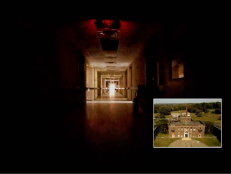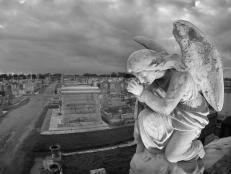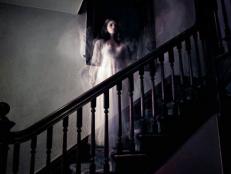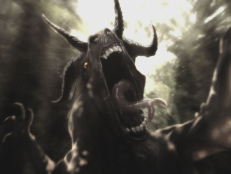Museum of Fine Arts

Boston is a city that celebrates its history as much as the Red Sox, and when it comes to art, Beantown's hard to beat. The Museum of Fine Arts, with a brand-new entrance on the Fenway, houses over 450,000 masterpieces. Here are five must-see pieces at Boston's MFA.
Paul Revere, 1768
John Singleton Copley
The first stop on this must-see tour highlights Boston's most famous hometown hero. John Singleton Copley's "Paul Revere" captures the essence of the man who led the Boston Tea Party and the fight for American independence. If you know your American history, then you know this painting was completed 5 years before the Boston Tea Party occurred. However, some say the painting is filled with political symbolism foreshadowing events to come.
Revere is dressed in his workman's clothes, portraying him as an American artisan. Absent are the time's popular white wigs and fancy clothes that mimicked the British aristocracy. Revere is holding a teapot, which easily symbolizes his resistance to the British tax on tea; a resistance that culminated in the Boston Tea Party and kick-started the American Revolution.
Americans didn't get the chance to view this painting until 1928. That's 160 years after the painting was completed! Revere's family disliked the painting and hid it in their attic for over a century before rescuing it and donating it to the MFA, Boston.
It's a wonderful and seemingly calm portrait that celebrated America's historic rebellion against the British.
Houses at Auvers, 1890
Vincent Van Gogh
Many people know that artist Vincent Van Gogh struggled with mental illness. He painted "Houses at Auvers" just before taking his own life in 1890. The year before Van Gogh arrived in Auvers, his already unstable mind suffered a serious breakdown; it was during this time that he famously cut off his own ear and sent it to a prostitute.
Van Gogh was in Auvers under the care of a homeopathic psychiatrist named Dr. Paul Gachet, who hoped the tranquility of the small French town would calm the artist's mania. Unfortunately, Van Gogh did not improve, churning out more than 70 paintings in 70 days -- including "Houses at Auvers."
Van Gogh's mania is evidenced on the canvas. He didn't let the layers of paint dry before adding more -- visible most clearly in the sky where the white and blue run together. The scenery appears as to be melting serving, perhaps, as a visual representation of his mental state.
Van Gogh took his life only days later at the age of 37.
Caritas, 1894-1895
Abbott Thayer
This next must-see painting at the MFA, Boston is also reflective of an artist's tortured mental state. Abbott Handerson Thayer painted "Caritas" between the years 1894 and 1895, but after its completion he wanted to destroy it.
It is believed Thayer painted this as a memorial to his late wife and their two sons, both of whom died in infancy. His wife, Kate, never recovered from the loss of her sons, and in 1888 she entered a mental asylum, seeking treatment for depression. Three short years later, Kate died.
The woman in the painting stands with her arms held wide, a traditional late 19th-century memorial pose, her two children on either side. Thayer poured his emotions onto the canvas, however he soon became obsessed with the idea of purity in women and children. He grew to hate "Caritas," some speculate because of the children's nudity.
When "Caritas" was first shown in Boston in 1897, a group of artists loved the work so much they raised the funds to purchase it and donated it to the MFA, Boston. Thayer continued to beg the museum to take the painting down so that he could destroy it.
The museum refused and "Caritas" still adorns its walls -- making it a must-see for MFA patrons.
King Mycerinus and Queen
King Mycerinus ruled Egypt in the 25th century B.C., and this sculpture was unearthed in one of the most incredible archaeological excavations of the 20th century. His tomb was located near the great pyramid of Giza, and in 1910 a joint team from Harvard and the MFA discovered this rare and unique sculpture.
Two figures stand side by side, gazing into eternity. Scholars identified King Mycerinus by the nemes he wears on his head, the long artificial beard, and a wraparound kilt with central tab, all of which were customary garb for an Egyptian king.
The two figures represent the ideal male and female forms. As is standard for sculptures of Egyptian men, his left foot is advanced, although all his weight remains on the right foot. The powerful female at his side mimics this stance.
There is some speculation that the pair featured here were not only husband and wife, but brother and sister, as well. It is theorized that Egypt was a matrilineal society, meaning that the throne of Egypt belonged to whoever married the pharaoh's daughter. Mycerinus and Khmernebty II were brother and sister, so in order to rule Egypt Mycerinus would have to marry her.
Dance at Bougival, 1883
Pierre Auguste Renoir
The last piece on our must-see tour of Boston's MFA is Renoir's "Dance at Bougival." The focus of this piece is a young woman named Suzanne Valadon, and her involvement with Renoir makes for an interesting story.
Renoir met Suzanne in 1883 when he was 42 and enjoying a successful career as one of the leading Impressionists, a famous group of painters who stirred up the art world at the end of the 19th century. Suzanne was 17 and a favorite model among the group of artists. She and Renoir had an intimate affair and in "Dance at Bougival," he paints her at her most seductive. She is posed with a partner whose hand holds her around the waist; her hand is around his neck and their bodies are very close together. Bougival, on the Seine outside Paris, was a place for drinking, dancing and merriment.
Renoir and Suzanne ended their affair shortly after this painting was finished. However, several months later she gave birth to a son who she hinted was Renoir's. A few years later this muse became the first woman ever inducted into the exclusive Societe Nationale De Beaux Arts, proving she wasn't just another pretty face.
Scandalous backstory aside, this painting is alive with movement and energy; color and texture; flirtation and intimacy.



























.jpg.rend.hgtvcom.231.174.suffix/1674758726773.jpeg)











